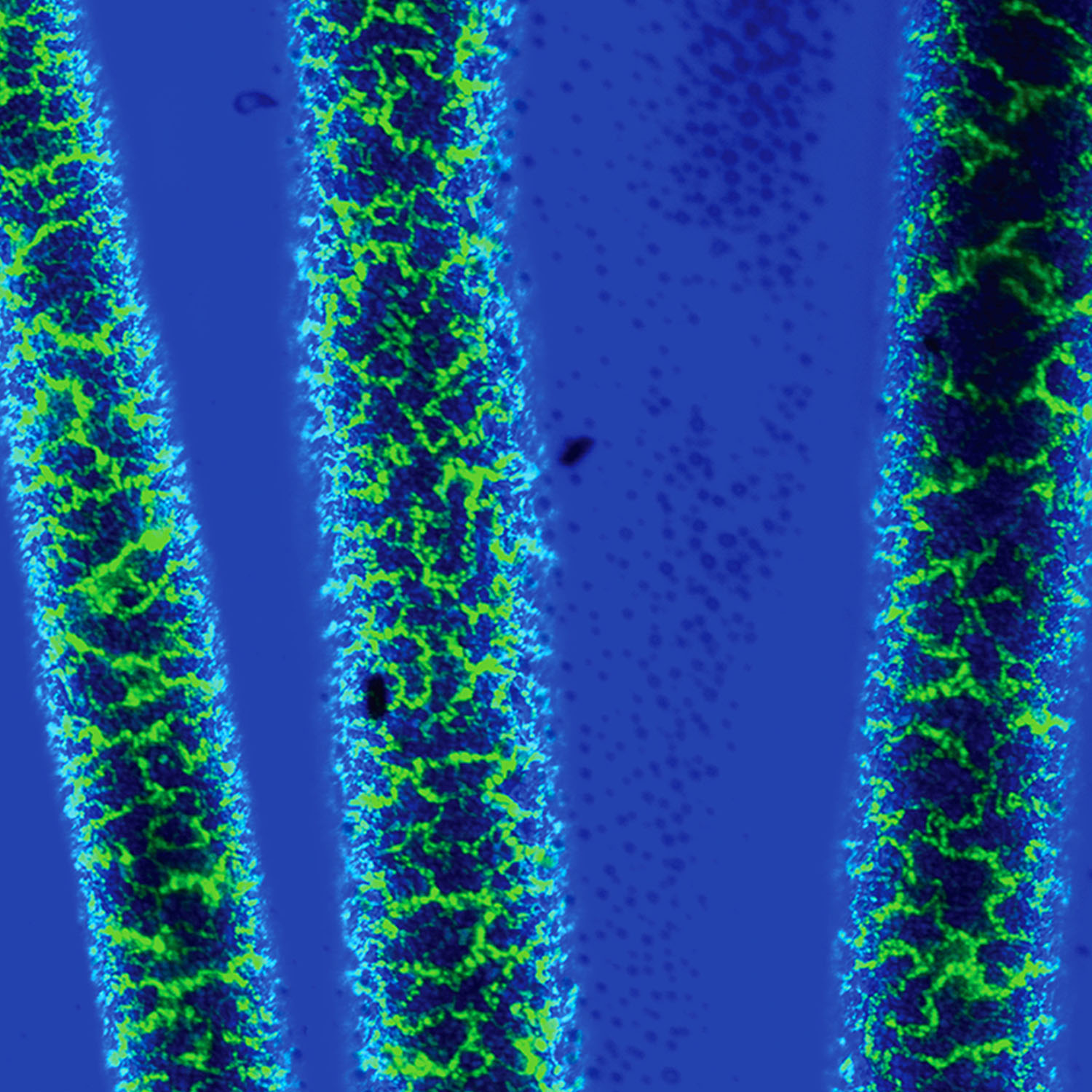 posted: 01/26/2016
posted: 01/26/2016
Bijels are bicontinuous networks of interwoven oil and water channels made stable by a percolating film of interfacially jammed colloidal particles. Traditionally fabricated by a delicate batch process via thermally-induced spinodal decomposition, bijels hold tremendous potential as promising platforms for interfacial catalysis and as fascinating vehicles for fundamental studies. A challenge with the traditional bijel formation route is that it is suitable for only few pairs of liquids with carefully tuned nanoparticle wetting properties. Postdoctoral researcher Martin Haase, working jointly with Profs. Daeyeon Lee and Kathleen Stebe, has devised a new approach, based on solvent transfer-induced phase separation (STRIPS). In STRIPS, bijels are formed continuously, from a diverse set of materials, with new degrees of control over the resulting structure. STRIPS exploits ternary liquid systems, comprising oil, water and a solvent, of which there are hundreds of candidate mixtures. If the solvent is removed in the right way, the oil and water phase separate spinodally, and nanoparticles adsorb and stabilize the structures. The nanoparticle wetting can be tuned in situ using surfactants, broadly diversifying the particles used. Solvent gradients can be tuned, for example, in a microfluidics device or via removal from a supported film, allowing bijel structures to be formed continuously, resulting in hierarchically structured particles, fibers or membranes. With this advance, we have taken a giant step toward realizing the promises of these fascinating new materials.
press release